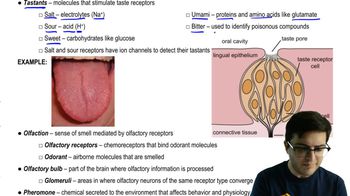The middle ear converts
a. Air pressure waves to fluid pressure waves
b. Air pressure waves to nerve impulses
c. Fluid pressure waves to nerve impulses
d. Pressure waves to hair cell movements
 Verified step by step guidance
Verified step by step guidance Verified video answer for a similar problem:
Verified video answer for a similar problem:

